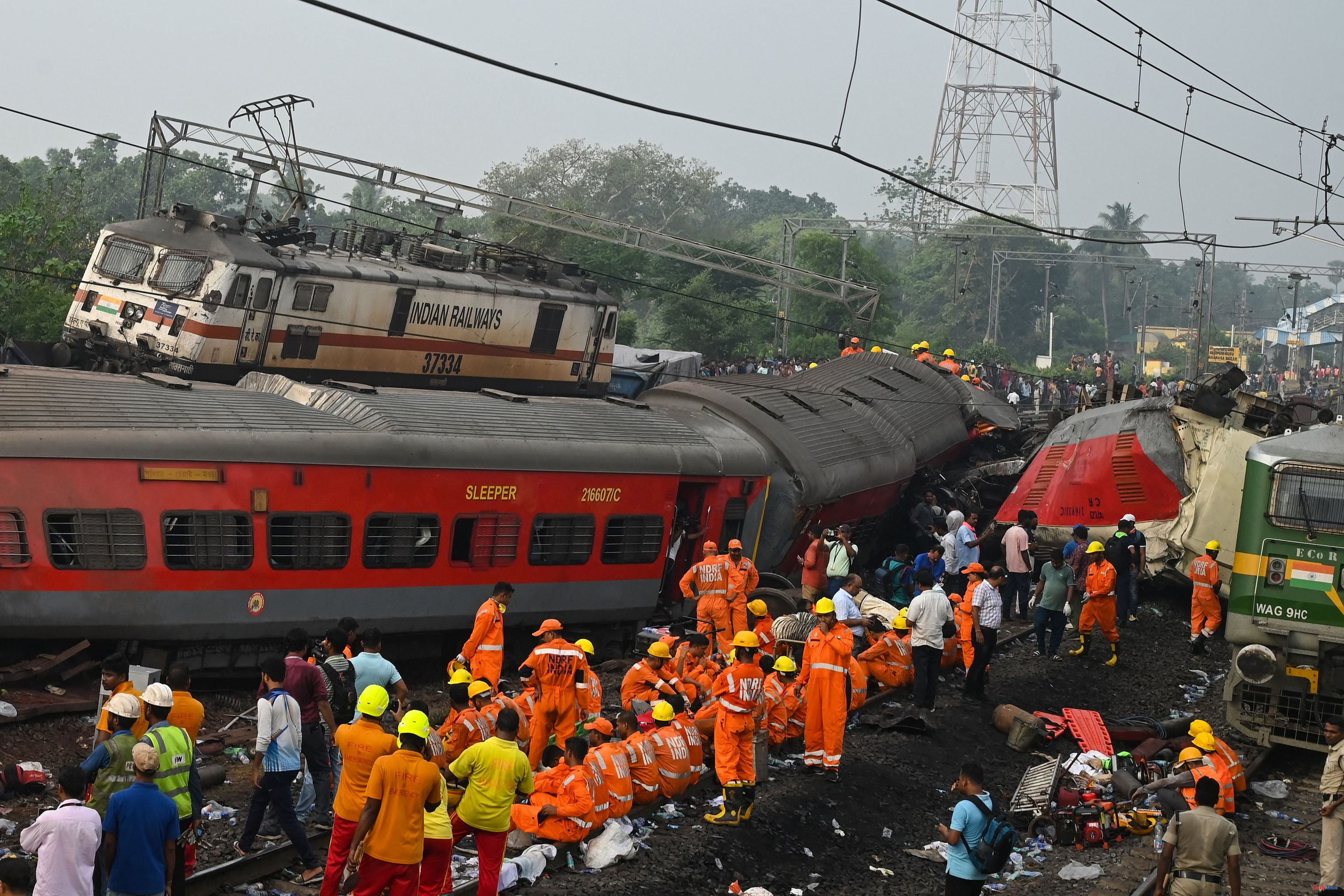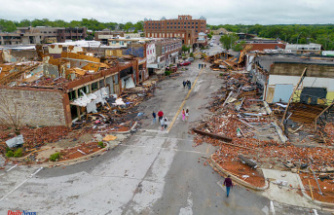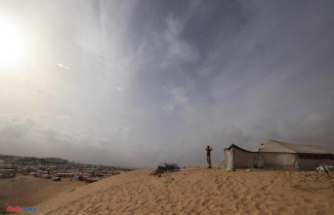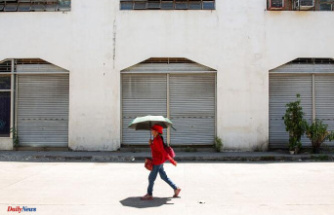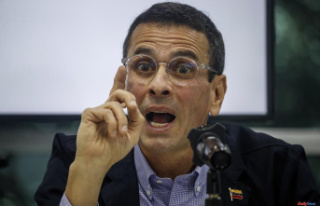"Inside the car, after the accident, I was trapped under a mountain of bodies. There were between 10 and 15 people. Many of them were already dead. I managed to crawl out on the floor. People were screaming. There was blood everywhere. I saw a man missing a hand. Another a leg. And a woman had half her face dismembered."
This is the testimony of one of the survivors of the worst rail disaster in India in the last three decades. Nearly 300 people have died. But the number is rising every hour because there are more than 900 injured after a triple accident between two passenger trains and another freight train.
It happened on Friday at 7:00 p.m. (3:30 p.m. in Spain) in the state of Odisha, anchored in the Bay of Bengal, eastern India. Specifically, the accident took place at a crossroads in the Balasore district. Two Howrah Express carriages derailed near the station, overturning onto the adjacent track and colliding with the Coromandel Express, which was coming from the opposite direction. This caused another 17 carriages to derail, crashing into a freight train.
Local television images showed destroyed train compartments and dozens of bodies scattered along the tracks. The first testimonies of survivors, such as the man who was trapped between several bodies, described the bloody massacre they had just experienced.
"Our top priority now is to rescue the passengers and provide medical assistance to the injured," Pradeep Jena, chief secretary of Odisha state, told reporters on Saturday morning as rescuers continued to pull out survivors and bodies. lifeless trains.
More than 200 ambulances and 1,500 troops arrived at the accident site. An Air Force brigade also participated in the operation. Meanwhile, in the nearest hospitals, hundreds of residents waited in long lines to donate blood. "In this hour of grief, my thoughts are with the bereaved families. We are all in anguish," Prime Minister Narendra Modi said.
The authorities have assured that, after all the survivors have been rescued and the final number of victims accounted for, they will dedicate all their efforts to investigate the causes of the accident. "A high-level committee has been formed to investigate the matter," said Ashwini Vaishnav, India's railway minister.
Unfortunately, these tragedies occur regularly in a country that has the largest railway network in the world under one direction, with around 64,000 kilometers. More than 12 million people travel on 14,000 trains a day across India.
The Coramandel Express, involved in the crash on Friday, already suffered another accident, some 50 kilometers from the current one, just 10 years ago. To find the worst rail disaster, you have to go back to 1981, when an overcrowded passenger train skidded off the tracks and into a river during a cyclone in Bihar state, killing at least 800 people. In 1995, two trains collided near the capital, New Delhi, killing 358 people.
Three years later, there were 212 fatalities in another crash in northern India. A few months later, two trains carrying more than 2,500 passengers collided in the state of Assam. There were 290 deaths. Already in this century, in 2002, the Howrah-New Delhi Rajdhani Express, considered the fastest train in India, derailed, leaving 140 dead. In 2005, it was a flash flood that washed away a small railway bridge, causing a train to derail. 114 people died.
The list continues in 2010 with two tragic accidents: an explosion on a train bound for Bombay, with the subsequent collision with a freight convoy, left 170 dead. In West Bengal, 63 lost their lives in another collision. In 2012, 25 passengers died in another similar accident in Andhra Pradesh. And in 2016, 150 died when the Indore-Patna Express derailed near Kanpur.
According to the criteria of The Trust Project

